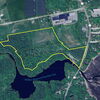Processing Your Payment
Please do not leave this page until complete. This can take a few moments.
- News
-
Editions
-
- Lists
-
Viewpoints
-
Our Events
-
Event Info
- Women's Leadership Forum 2025
- On the Road with Mainebiz in Bethel
- Health Care Forum 2025
- On The Road with Mainebiz in Greenville
- On The Road with Mainebiz in Waterville
- Small Business Forum 2025
- Outstanding Women in Business Reception 2025
- On The Road with Mainebiz in Bath
- 60 Ideas in 60 Minutes Portland 2025
- 40 Under 40 Awards Reception 2025
- On The Road with Mainebiz in Lewiston / Auburn
- 60 Ideas in 60 Minutes Bangor 2025
Award Honorees
- 2025 Business Leaders of the Year
- 2024 Women to Watch Honorees
- 2024 Business Leaders of the Year
- 2023 NextUp: 40 Under 40 Honorees
- 2023 Women to Watch Honorees
- 2023 Business Leaders of the Year
- 2022 NextUp: 40 Under 40 Honorees
- 2022 Women to Watch Honorees
- 2022 Business Leaders of the Year
-
-
Calendar
-
Biz Marketplace
- News
-
Editions
View Digital Editions
Biweekly Issues
- April 21, 2025 Edition
- April 7, 2025
- March 24, 2025
- March 10, 2025
- Feb. 24, 2025
- Feb. 10, 2025
- + More
Special Editions
- Lists
- Viewpoints
-
Our Events
Event Info
- View all Events
- Women's Leadership Forum 2025
- On the Road with Mainebiz in Bethel
- Health Care Forum 2025
- On The Road with Mainebiz in Greenville
- On The Road with Mainebiz in Waterville
- + More
Award Honorees
- 2025 Business Leaders of the Year
- 2024 Women to Watch Honorees
- 2024 Business Leaders of the Year
- 2023 NextUp: 40 Under 40 Honorees
- 2023 Women to Watch Honorees
- 2023 Business Leaders of the Year
- + More
- 2022 NextUp: 40 Under 40 Honorees
- 2022 Women to Watch Honorees
- 2022 Business Leaders of the Year
- Nomination Forms
- Calendar
- Biz Marketplace
Big windfall? Mills Administration report touts future of offshore wind
 SCREENSHOT / COURTESY, MAINE DEPARTMENT OF TRANSPORTATION
Maine is looking at semi-submersible foundations, such as these examples. From left, a spar foundation, a semi-submersible and a tension platform.
SCREENSHOT / COURTESY, MAINE DEPARTMENT OF TRANSPORTATION
Maine is looking at semi-submersible foundations, such as these examples. From left, a spar foundation, a semi-submersible and a tension platform.
A new report from the Mill Administration says 80 Maine companies are engaging in the U.S. offshore wind industry.
And the industry could generate more than $100 billion in private investment by 2030.
The Governor’s Energy Office on Thursday released the Maine Offshore Wind Roadmap, a stakeholder-driven comprehensive plan that offers detailed strategies for Maine to realize economic, energy and climate benefits from offshore wind, in conjunction with communities, fisheries and wildlife around the Gulf of Maine.
The 80 companies cited in the report represent an estimate based on several sources, such as known industry participants and various private supply chain databases, that were analyzed for the roadmap, a spokesperson for the Mills Administration told Mainebiz.
The release of the roadmap comes after the federal Bureau of Ocean Energy Management last month advanced an application by the state to lease a proposed site in federal waters in the Gulf of Maine for a floating offshore wind research array.
As the first project of its kind in the U.S., the research array will foster research into the cost-effective operation of floating offshore wind and how it interacts with the marine environment, wildlife, the fishing industry, shipping and navigation routes, and more.
The array is proposed to include 10-12 turbines on semi-submersible floating concrete platforms known as VolturnUS, designed by the University of Maine’s Advanced Structures and Composite Center.
The final size and location of the research site will be determined by BOEM during its leasing review process, which will continue this year.
The report highlights two Maine companies now active in offshore wind, Deepwater Buoyancy of Biddeford and Ironhouse Engineering in Lewiston, as examples.
The roadmap outlines strategies for Maine to benefit from offshore wind while preserving Gulf of Maine communities, fisheries and wildlife
Additional findings say that workforce opportunities in offshore wind cover nearly 120 occupations in Maine, such as engineering, electricians, metalworkers, marine operations, surveying, boat building and maintenance, and research and development.
Over the long term, offshore wind would reduce Maine and New England’s reliance on imported natural gas to generate electricity and meet the increasing demand for clean energy to curb carbon emissions and fight climate change.
The University of Maine will play a key role, the report says, due to its development of a pioneering floating offshore wind research platform.
The plan says that offshore wind must advance responsibly in Maine to preserve the state’s thriving marine economy, especially fishing, and protect the Gulf of Maine ecosystem.
The roadmap was developed over 18 months in a public process led by a 24-person advisory committee with members from state agencies and energy, economic, fisheries, wildlife, science and environmental leaders in Maine.
The committee was supported by four expert working groups on energy, economy, fisheries and wildlife. Nearly 80 public sessions were held to develop the roadmap.
Objectives are organized around five key topics — supporting economic growth and resiliency, harnessing renewable energy, advancing Maine-based innovation, supporting Maine’s seafood industry, and protecting the Gulf of Maine’s ecosystem.
“Our state has the opportunity to unlock the power of offshore wind to generate clean, homegrown energy, lower energy costs, create good-paying jobs in a growing industry, and protect our environment for future generations,” Gov. Janet Mills said in a news release.
The roadmap was supported by a $2.1 million grant from the U.S. Economic Development Agency.
It’s part of the Maine Offshore Wind Initiative, a multi-faceted approach to responsible offshore wind in Maine launched by Mills in 2019 and overseen by the Governor’s Energy Office. Since the Maine Offshore Wind Initiative was launched in 2019, the pace of the offshore wind in the U.S. has accelerated as clean energy generation targets set by the federal government and many states increase demand for commercial-scale projects in deep federal waters, where it’s expected that floating platform technology will likely be required.
In September 2022, the U.S. departments of energy, interior, commerce and transportation collectively announced a new initiative — the Floating Windshot — to accelerate floating wind by setting a national target of generating 15 gigawatts of energy from floating wind by 2045, and reduce the cost of that energy by 70%.
To read the report, click here.
Mainebiz web partners
Related Content
In the entire history of the wind industry, not one single installation anywhere in the world has ever produced even close to 25% of the cost of the energy required to build and install these wastes of taxpayer dollars.
The only reason to invest in the wind industry is because of the federal tax subsidies and incentives according to Warren Buffett.
So Mills wants to spend your hard earned tax dollars on a project that has zero chance of ever coming close to bringing in the bacon on electrical generation and we should applaud this? The entire green energy idea, while esoterically attractive, is a house of cards because without government subsidies, it just doesn't work - never has and never will. Wind and solar simply cannot replace the reliability and dependability of fossil based electric generation.
Here's the test: Adam Smith wrote the book 'Wealth of Nations' and it is the backbone of the success of capitalism and any federal subsidy conclusively proves that the industry is incapable of standing on it's own two feet and therefore will forevermore be a financial drain and ward of the state and federal subsidies.
Also take into consideration what the wind farm in New Jersey has done to the local whale population with the number of dead whales washing up on the beaches.
There is no possible way that this idea should have even seen the light of day in the legislature and is indicative of the blind leading the inept in our government. Don't confuse facts with emotions.














3 Comments